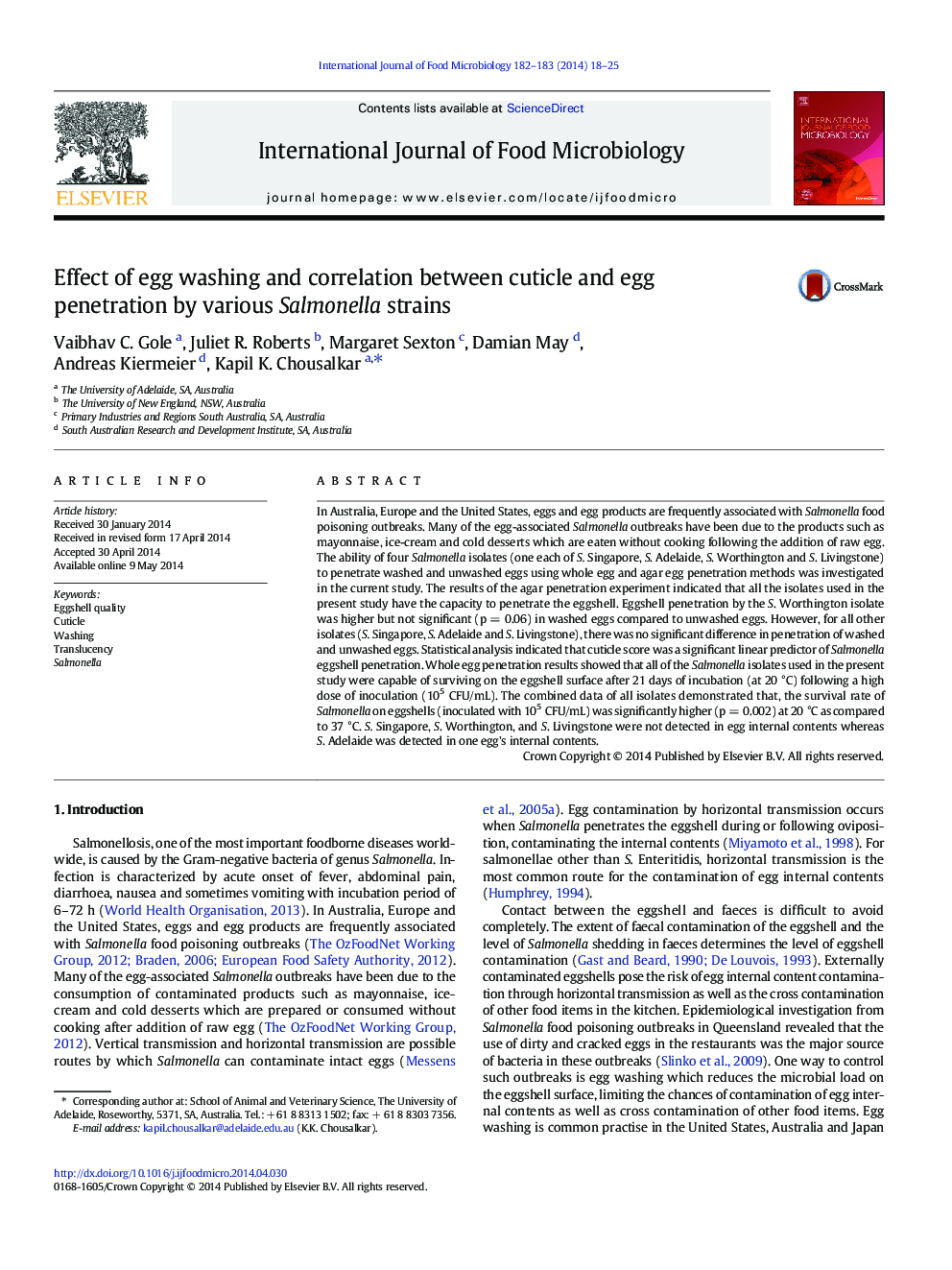| Article ID | Journal | Published Year | Pages | File Type |
|---|---|---|---|---|
| 4366912 | International Journal of Food Microbiology | 2014 | 8 Pages |
Abstract
In Australia, Europe and the United States, eggs and egg products are frequently associated with Salmonella food poisoning outbreaks. Many of the egg-associated Salmonella outbreaks have been due to the products such as mayonnaise, ice-cream and cold desserts which are eaten without cooking following the addition of raw egg. The ability of four Salmonella isolates (one each of S. Singapore, S. Adelaide, S. Worthington and S. Livingstone) to penetrate washed and unwashed eggs using whole egg and agar egg penetration methods was investigated in the current study. The results of the agar penetration experiment indicated that all the isolates used in the present study have the capacity to penetrate the eggshell. Eggshell penetration by the S. Worthington isolate was higher but not significant (p = 0.06) in washed eggs compared to unwashed eggs. However, for all other isolates (S. Singapore, S. Adelaide and S. Livingstone), there was no significant difference in penetration of washed and unwashed eggs. Statistical analysis indicated that cuticle score was a significant linear predictor of Salmonella eggshell penetration. Whole egg penetration results showed that all of the Salmonella isolates used in the present study were capable of surviving on the eggshell surface after 21 days of incubation (at 20 °C) following a high dose of inoculation (105 CFU/mL). The combined data of all isolates demonstrated that, the survival rate of Salmonella on eggshells (inoculated with 105 CFU/mL) was significantly higher (p = 0.002) at 20 °C as compared to 37 °C. S. Singapore, S. Worthington, and S. Livingstone were not detected in egg internal contents whereas S. Adelaide was detected in one egg's internal contents.
Related Topics
Life Sciences
Agricultural and Biological Sciences
Food Science
Authors
Vaibhav C. Gole, Juliet R. Roberts, Margaret Sexton, Damian May, Andreas Kiermeier, Kapil K. Chousalkar,
